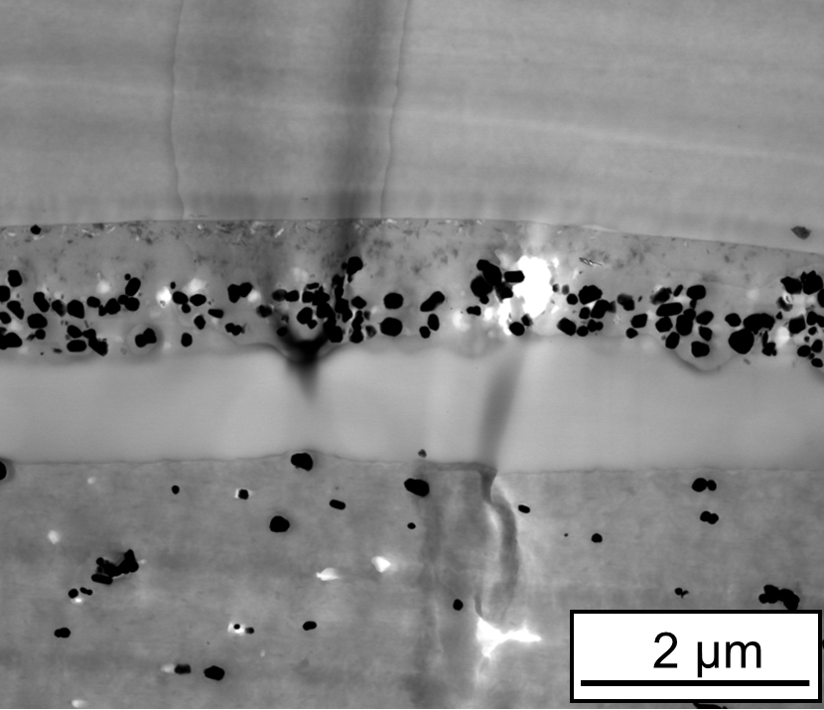Biopolymer-based multilayer films with natural coatings for food packaging
Food packaging made of plastics is specially customized to protect products against environmental influences, such as light, contamination, damage, and micro-organisms. In a joint research project, the Fraunhofer Institute for Microstructure of Materials and Systems IMWS and the technical film producer POLIFILM Extrusion GmbH, are working to engineer biopolymer-based films for food packaging. In this project, the specialists relied on chitosan coatings to increase the resistance of food to microbiological impacts.
Technical films and films for packaging – like those used, for instance, to protect drinking bottles, furniture surfaces, cargo transports, and others - are in great demand in industry. Food packaging primarily uses flexible, transparent film products that must meet multiple requirements: On the one hand, they must exhibit strong mechanical stability for protection during transport. On the other hand, thanks to the introduction of migration barriers, they retain the product’s valuable smell and taste as well as its freshness and shelf life.
To fulfill all these objectives, multilayer films that combine various material properties are frequently used. Most of these technical films are currently still made of the plastics polyethylene (PE), polypropylene (PP), polyethylene terephthalate (PET) and polyvinylchloride (PVC). The manufacturers are constrained by the packaging law that took effect in 2019 to increase the percentage of recycled packaging materials from the current 36 percent to 63 percent in the future. As a result, sustainability in the packaging materials industry has become more and more significant, and recycled or recyclable materials, biodegradable and/or biobased plastics will gain importance in the future.
The task is to pioneer material innovations and to identify alternatives to conventional polymer substrates, including barrier layer materials, as well as to develop products that are based on them. New materials that are ideally biodegradable, easily recyclable and/or made of renewable raw materials can also contribute to finding alternative recycling methods and to conserving resources in production.
The Fraunhofer IMWS focusses on this goal in its cooperation with the POLIFILM Extrusion GmbH from Weißandt-Gölzau in Saxony-Anhalt in a research project lasting until August 2021: together, the scientists will manufacture biopolymer-based films for food packaging that meet the complex requirements, can be produced more sustainably, and are more readily recyclable. The objective is to design and manufacture new, innovative multilayer films based on biopolymers with various barrier layer properties and functional film surfaces to be used in packaging materials.
»We intend to engineer a multilayer film made of biopolymers that is an efficient barrier, but is also very mechanically stable, sufficiently transparent, and equipped with further properties important to its further use«, explains Dr. Sandra Richter, project manager at the Fraunhofer IMWS. The barrier properties of the innovative films should be achieved by purposeful biopolymer combinations and/or the introduction of platelet-like fillers. The project partners also plan to equip the film surface with antimicrobial properties. This is to be achieved through a modification by means of chitosan or chitosan derivatives that are produced from chitin in several processing steps. »Chitosan is a natural substance obtained from the shells of shellfish. Thus, we are using another natural raw material to modify the biopolymer films. Apart from its antibacterial effect, chitosan is highly biocompatible, biodegradable, non-toxic, and acts as a natural barrier as well«, Richter says.
The plan is to introduce chitosan into the external layer of the packaging film, either by laminating it on as a kind of net-like surface mat or by depositing it on the film as a wet-chemical coating. The industrial technique the project partners intend to develop should make it possible to produce huge quantities of biopolymer packaging film. Another goal is to design a non-destructive diagnostic method that is particularly applicable to multilayer films and to provide findings in terms of layer thickness of the individual film layers and possible bonding defects resulting from delamination or occlusions. This way, it can be ensured that even the new biological films can be tested in a way suitable for an industrial process and fulfill the necessary quality requirements.

